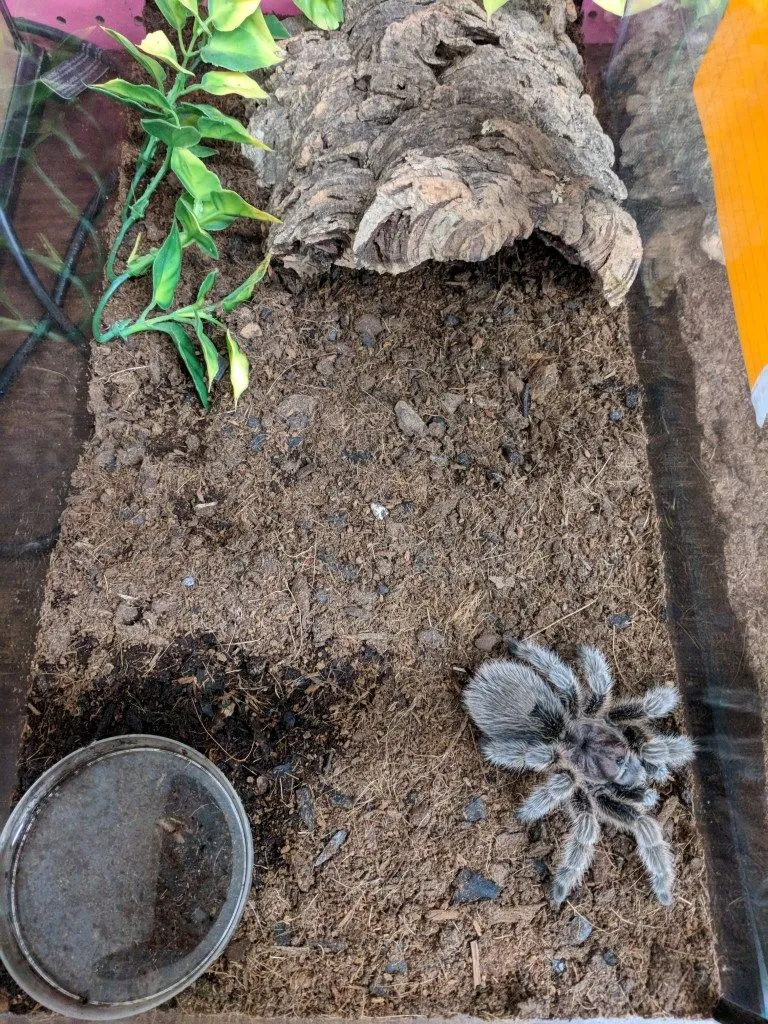Understanding the Rose Hair Tarantula (Grammostola rosea)
The Rose Hair Tarantula (Grammostola rosea), a captivating arachnid, has gained immense popularity as a pet. Known for its docile temperament and striking appearance, this tarantula species offers a unique and rewarding experience for both novice and experienced keepers. This comprehensive care guide delves into the essential aspects of providing optimal care for your Rose Hair Tarantula, ensuring a long, healthy, and fulfilling life for your eight-legged companion. From understanding its natural habitat to mastering the art of feeding and creating the ideal enclosure, this guide equips you with the knowledge to create an environment where your tarantula can thrive. We will explore all the details and tips that every owner must know to successfully take care of their Rose Hair Tarantula.
Origin and Habitat
Rose Hair Tarantulas are native to the arid regions of South America, primarily found in Chile, Bolivia, and Argentina. They thrive in environments characterized by dry climates, rocky terrains, and sparse vegetation. Understanding their natural habitat is crucial for replicating suitable conditions in captivity. These tarantulas are burrowing spiders, spending a significant portion of their lives underground, seeking refuge from the harsh sun and predators. The native habitat consists of scrubland and desert areas, which should be kept in mind when creating their environment. The importance of understanding the Rose Hair Tarantula’s origin lies in the ability to create an enclosure that closely mimics its natural environment and aids in its health and well-being. This understanding is the first step in ensuring the happiness of your pet.
Appearance and Characteristics
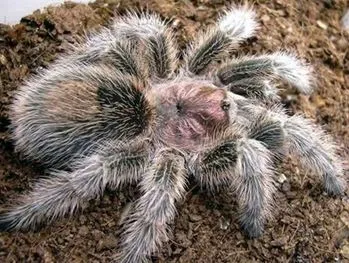
The Rose Hair Tarantula boasts a distinctive appearance that contributes to its appeal. They typically have a body length of 2 to 3 inches, with a leg span that can reach up to 5 inches. Their coloration ranges from a dark brown to a reddish-brown hue, with characteristic pinkish hairs on the abdomen. These hairs, which give the tarantula its name, are a key identifier. Their bodies are covered in a dense coat of setae (tiny hairs), which are sensitive to touch and vibration. Rose Hair Tarantulas are known for their docile temperament, making them one of the most handleable tarantula species. Their longevity is another notable characteristic, with females living for 15-20 years, and males for 5-10 years. Their physical characteristics are significant, as they affect not only their physical appearance but also how they should be taken care of.
Creating the Perfect Rose Hair Tarantula Habitat
Creating a suitable habitat is paramount for the health and happiness of your Rose Hair Tarantula. The enclosure should replicate its natural environment and provide a safe and stimulating space. This section covers all aspects of setting up the perfect home for your pet. Proper housing ensures not only the survival of the tarantula but also its overall well-being. It provides a space where the spider feels safe and comfortable, which prevents stress, which is crucial for a healthy tarantula. From enclosure size to substrate selection, every detail must be considered to provide your tarantula with the best life possible. There are many products available on the market that can help with all of this.
Choosing the Right Enclosure
The size of the enclosure is crucial, especially when determining the well-being of the spider. A good rule of thumb is to provide an enclosure that is at least three times the tarantula’s leg span in width. For a juvenile Rose Hair Tarantula, a 5-gallon terrarium or a similar-sized plastic container is sufficient. As the tarantula grows, the enclosure size should be increased accordingly. A 10-gallon or larger terrarium is suitable for adult females. The enclosure should be made of glass or clear plastic to allow for easy viewing and observation. Ventilation is also essential; ensure the enclosure has adequate ventilation to prevent the buildup of humidity and the growth of mold. A secure lid is also important to prevent escapes. The location of the enclosure matters too; it should be placed in a quiet area, away from direct sunlight and drafts.
Substrate Selection
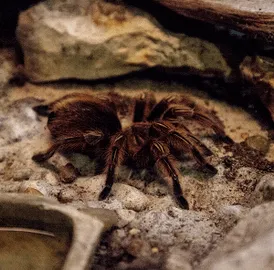
The substrate serves as the flooring of the enclosure and plays a critical role in maintaining humidity levels, providing a burrowing medium, and offering a natural environment for the tarantula. A mixture of substrate materials is often best, with some of the most common choices, including coconut fiber, peat moss, and vermiculite. Coconut fiber is a popular choice due to its excellent moisture-retaining properties. Peat moss also helps retain moisture. Vermiculite adds some volume to the substrate, helping keep the substrate at the right humidity. The substrate should be deep enough to allow the tarantula to burrow if it chooses. A depth of 4-6 inches is typically recommended. The substrate should also be kept clean by regularly removing any uneaten food or waste to prevent the buildup of mold and bacteria. The substrate should be lightly misted with water every few days to maintain appropriate humidity levels.
Temperature and Humidity
Temperature and humidity are crucial factors in creating a thriving environment for your Rose Hair Tarantula. These tarantulas thrive in temperatures between 75-85°F (24-29°C). A heat mat placed on the side of the enclosure, connected to a thermostat, can provide supplemental heat, especially in cooler environments. Direct heat from a heat lamp is not recommended, as it can cause overheating. Humidity levels should be maintained between 60-70%. This can be achieved by misting the substrate with water every few days or by providing a shallow water dish. A hygrometer is a useful tool for monitoring humidity levels. Proper temperature and humidity control are essential to the tarantula’s health and molting process. Monitor these levels regularly and adjust accordingly to ensure your tarantula’s well-being.
Essential Equipment for a Thriving Tarantula
Several pieces of equipment are essential for setting up a safe and enriching environment for your Rose Hair Tarantula. A shallow water dish is necessary to provide a constant source of fresh water. The water dish should be shallow enough to prevent the tarantula from drowning. Hiding places, such as cork bark, artificial plants, or half-logs, are also essential to provide the tarantula with a sense of security and a place to retreat. A thermometer and hygrometer are critical tools for monitoring the enclosure’s temperature and humidity levels. The substrate, discussed earlier, is also essential. A secure lid prevents escapes and maintains the enclosure’s environment. All of these elements will contribute to a happier, healthier tarantula.
Feeding Your Rose Hair Tarantula
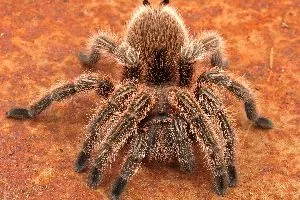
Proper feeding is crucial for the health and growth of your Rose Hair Tarantula. This section covers all the aspects of what to feed your pet, how often to feed, and hydration tips to ensure your tarantula gets the nutrients it needs to thrive. A well-nourished tarantula is a healthy tarantula. It also provides the energy needed for molting and other vital functions. Learn how to create a feeding plan that will help your Rose Hair Tarantula thrive.
Dietary Needs
Rose Hair Tarantulas are insectivores, and their diet primarily consists of insects. Crickets, mealworms, and roaches are commonly used feeders. The size of the prey should be appropriate for the tarantula’s size; prey should be no larger than the tarantula’s body length. Variety in the diet is also beneficial. Supplementing the diet with occasional treats, such as small pieces of pre-killed pinky mice (for adult females), can provide additional nutrients. It’s also important to dust the feeder insects with calcium and vitamin supplements to ensure that your tarantula receives the necessary vitamins and minerals. The tarantula’s diet can have a direct impact on its health, growth, and overall well-being. Always provide clean water for hydration.
Feeding Frequency and Techniques
Feeding frequency varies depending on the tarantula’s age and size. Spiderlings should be fed two to three times a week, while juveniles and adults can be fed once or twice a week. Overfeeding should be avoided, as it can lead to health problems. Remove any uneaten food within 24 hours to prevent the buildup of mold and bacteria. The feeding process is pretty straightforward. Place the feeder insect into the enclosure, making sure it’s the correct size. If the tarantula is not hungry, it may refuse to eat. If this happens, wait a few days and try again. Always monitor your tarantula’s eating habits and adjust the feeding frequency as needed. Providing fresh water is also important, and it must be easily accessible to the tarantula.
Water and Hydration
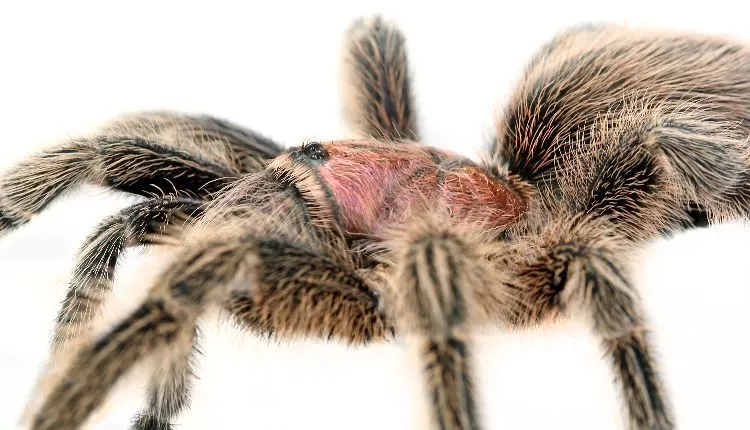
Water is essential for all living creatures, including tarantulas. A shallow water dish should always be available for the tarantula to drink from. The water should be fresh and clean. Replace the water regularly to prevent the growth of bacteria and algae. The dish should be shallow enough that the tarantula can easily access the water without the risk of drowning. The substrate also plays a role in hydration by maintaining the humidity levels in the enclosure. Misting the substrate lightly every few days will help keep it moist and provide the necessary humidity. Providing your tarantula with fresh water is a basic but crucial aspect of Rose Hair Tarantula care. Always check that the water source is clean and that the tarantula is drinking enough.
Rose Hair Tarantula Health and Well-being
Understanding the health and well-being of your Rose Hair Tarantula is important. This section covers the signs of a healthy tarantula, common health issues, and how to handle your pet safely. Recognizing the signs of good health is key to providing the proper care to your tarantula. Learning about common health problems can help you take steps to prevent them. With knowledge of the basics of their well-being, you can give your pet a happy and healthy life.
Common Health Issues
While Rose Hair Tarantulas are generally hardy creatures, they can still be susceptible to certain health issues. One common issue is dehydration, which can be prevented by providing a constant source of fresh water and maintaining proper humidity levels. Parasites are another potential concern; mites and other parasites can infest the tarantula. If mites are detected, the enclosure should be thoroughly cleaned, and the tarantula may need to be treated with a mite-specific product. Another common issue is injuries from falls or handling, especially if the tarantula is dropped. Molting problems can also occur if the enclosure’s environment is not adequate. Always be observant of the tarantula’s behavior and health. Early detection of problems is the key to successful treatment.
Handling and Interaction Guidelines
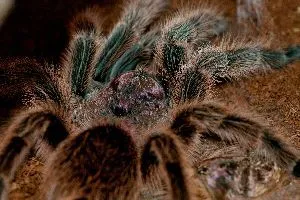
While Rose Hair Tarantulas are known for their docile temperament, handling should be approached with caution. Handling should be kept to a minimum, as it can be stressful for the tarantula. If handling is necessary, do so close to the ground to avoid a fall. Wash your hands before and after handling to prevent the spread of germs. Always handle the tarantula gently, and avoid sudden movements. Never grab the tarantula or try to force it to move. Be aware of the tarantula’s defensive behaviors, such as flicking hairs from their abdomen. If the tarantula appears stressed or agitated, it’s best to leave it alone. Always supervise children when they interact with the tarantula. It’s essential to respect the tarantula’s needs and boundaries to ensure both the tarantula’s and the handler’s safety.
Molting Process
Molting is a natural process where the tarantula sheds its exoskeleton to grow and regenerate. Before molting, the tarantula may stop eating and become lethargic. The tarantula may also spin a web mat. During molting, the tarantula will lie on its back, and the old exoskeleton will split open. The process can take several hours or even days. Do not disturb the tarantula during this process. After molting, the tarantula will be vulnerable; do not feed the tarantula until its fangs have hardened. Once the new exoskeleton has hardened, the tarantula can resume feeding. Molting is an important part of the tarantula’s life cycle. Proper care during this time will help ensure the tarantula’s health and well-being.
Breeding Rose Hair Tarantulas
Breeding Rose Hair Tarantulas can be a fascinating and rewarding experience. However, it requires a good understanding of the tarantula’s biology and the specific needs of breeding. This section provides guidance on how to prepare for breeding and what to expect during the process. This is an advanced topic, and it should be undertaken by those who already have experience in caring for tarantulas. Breeding requires specific knowledge to maximize the success of the process.
Sexing Your Tarantula
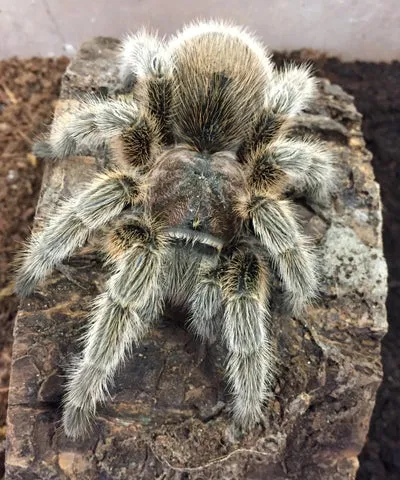
Sexing Rose Hair Tarantulas is essential for breeding purposes. There are two primary methods for determining the sex of a tarantula. The first is to examine the molt; the presence of spermathecae (sperm storage organs) indicates a female. The second method involves examining the underside of the tarantula. Males have a small hook-like structure on their front legs, which are used for mating, and the presence of a slit indicates a female. It can be difficult to sex a tarantula, especially when the tarantula is young. With patience and experience, it can be done. There are several online resources that can guide you through the process.
Mating and Egg Sacs
Mating Rose Hair Tarantulas involves introducing a mature male to a mature female. This should be done in the female’s enclosure, and the keeper should supervise the mating process to prevent the female from attacking the male. If mating is successful, the female will lay eggs and create an egg sac. The egg sac should be incubated at the proper temperature and humidity. After a few weeks, the eggs will hatch, and the spiderlings will emerge. Raising spiderlings requires specialized care, including providing small insects and a suitable habitat. Breeding Rose Hair Tarantulas is a complex process that should be undertaken by experienced keepers only. It’s important to research the process thoroughly and be prepared for the time and effort it requires.
Conclusion
Caring for a Rose Hair Tarantula can be a rewarding experience. By understanding their needs and providing a suitable environment, you can ensure your tarantula lives a long, healthy, and fulfilling life. Remember to research the species, provide the proper habitat, and monitor your tarantula’s health regularly. With proper care and a bit of dedication, you can enjoy the unique experience of owning one of these fascinating creatures. Always prioritize your tarantula’s well-being and seek help if you encounter any problems. Enjoy your journey with your Rose Hair Tarantula; it’s an adventure!
